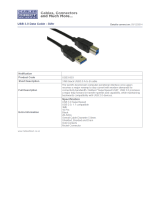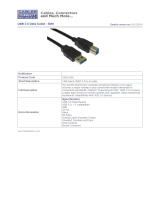
Installing the speaker.....................................................................................................................................................38
Coin cell battery...................................................................................................................................................................40
Removing the coin cell battery.................................................................................................................................... 40
Installing the coin cell battery.......................................................................................................................................40
Power supply unit.................................................................................................................................................................41
Removing the power supply unit..................................................................................................................................41
Installing the power supply unit ...................................................................................................................................44
Optical drive......................................................................................................................................................................... 47
Removing the optical drive........................................................................................................................................... 47
Installing the optical drive............................................................................................................................................. 49
IO panel.................................................................................................................................................................................50
Removing the IO panel..................................................................................................................................................50
Installing the IO panel....................................................................................................................................................55
Solid state drive................................................................................................................................................................... 60
Removing the PCIe SSD card......................................................................................................................................60
Installing the PCIe SSD card......................................................................................................................................... 61
Power button module......................................................................................................................................................... 63
Removing power button module................................................................................................................................. 63
Installing power button module....................................................................................................................................64
Heatsink assembly—65 W/80 W..................................................................................................................................... 66
Removing heat sink assembly—65 W or 80 W.........................................................................................................66
Installing heat sink assembly—65 W or 80 W........................................................................................................... 67
Blower and heat sink assembly—95 W............................................................................................................................68
Removing blower and heat sink assembly—95 W....................................................................................................68
Installing blower and heat sink assembly—95 W...................................................................................................... 70
VR heat sink......................................................................................................................................................................... 72
Removing VR heat sink................................................................................................................................................. 72
Installing VR heat sink................................................................................................................................................... 72
Front fan............................................................................................................................................................................... 73
Removing front fan........................................................................................................................................................73
Installing front fan..........................................................................................................................................................76
System fan............................................................................................................................................................................78
Removing system fan....................................................................................................................................................78
Installing system fan...................................................................................................................................................... 79
Optional IO card...................................................................................................................................................................80
Removing optional IO card........................................................................................................................................... 80
Installing the optional IO card .......................................................................................................................................81
Processor..............................................................................................................................................................................83
Removing the processor...............................................................................................................................................83
Installing the processor................................................................................................................................................. 83
Intrusion switch....................................................................................................................................................................84
Removing intrusion switch........................................................................................................................................... 84
Installing intrusion switch..............................................................................................................................................85
System board.......................................................................................................................................................................86
Removing the system board........................................................................................................................................ 86
Installing the system board...........................................................................................................................................88
5 Troubleshooting......................................................................................................................... 92
Power supply unit Built-in Self Test .................................................................................................................................92
Steps to confirm that power supply unit is defective...............................................................................................92
4
Contents
























